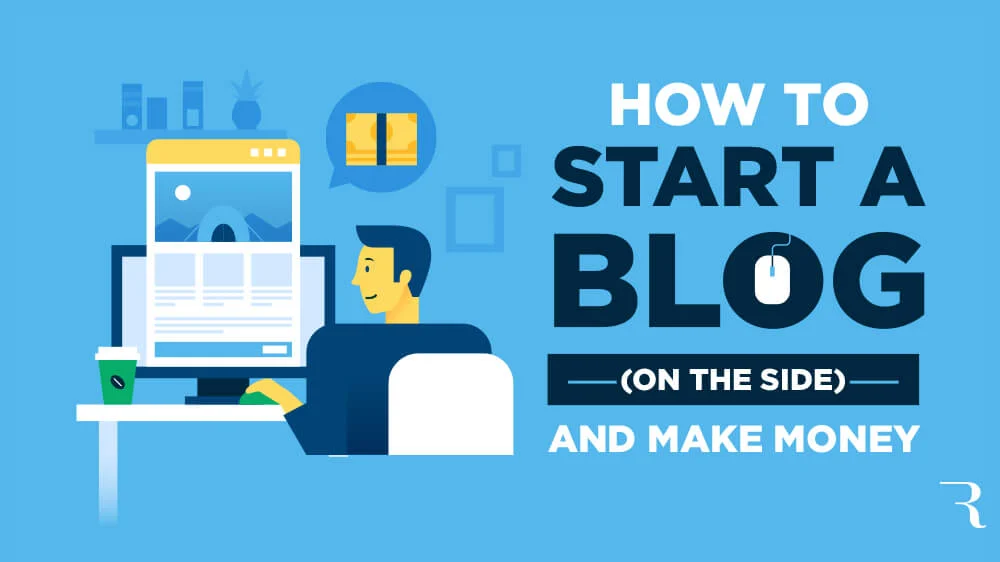In the digital age, blogging has become a popular means of self-expression, sharing knowledge, and even generating income. Whether you have a passion for travel, cooking, technology, or any other topic, starting a blog can be an exciting venture. However, to create a successful blog, you need careful planning and execution. This comprehensive guide will walk you through the essential steps to start your own blog.
I. Planning
Before diving into the world of blogging, it’s crucial to have a clear plan in mind:
A. Define the Purpose of the Blog: Ask yourself why you want to start a blog. Is it for personal expression, to share expertise, or to make money? Defining your purpose will shape your content and goals.
B. Identify the Target Audience: Understanding your potential readers is key. Define your target audience’s demographics, interests, and problems your blog can solve.
C. Choose a Niche/Topic: Select a niche that aligns with your interests and expertise. It’s essential to choose a niche you’re passionate about, as it will keep you motivated.
II. Domain and Hosting
Once you’ve outlined your blog’s purpose and topic, it’s time to establish your online presence:
A. Choose a Domain Name: Select a domain name that reflects your blog’s theme and is easy to remember. Ensure it’s available for registration.
B. Select a Reliable Hosting Provider: Research and choose a hosting provider that suits your budget and hosting needs. Purchase your domain and hosting package.
III. Content Strategy
Your blog’s content is the heart of your online presence:
A. Brainstorm Content Ideas: Generate a list of potential topics and ideas related to your niche.
B. Develop a Content Calendar: Create a schedule for publishing content to maintain consistency.
C. Decide on Content Types: Choose the format of your content, such as articles, videos, podcasts, or a combination.
D. Create a Content Plan and Outline: Plan your blog posts in advance, including headlines, subheadings, and key points.
IV. Website Setup
Set up your blog’s platform:
A. Install a Content Management System (CMS): WordPress is a popular choice for bloggers due to its user-friendly interface and extensive customization options.
B. Choose a Responsive Theme: Select a theme that is visually appealing and mobile-friendly. Ensure it complements your niche.
C. Install Essential Plugins: Enhance your blog’s functionality with plugins for SEO, security, and performance optimization.
D. Configure SEO Settings: Optimize your blog for search engines by customizing metadata, permalinks, and sitemaps.
E. Create Essential Pages: Include critical pages like ‘About,’ ‘Contact,’ and ‘Privacy Policy’ to build trust with your readers.
V. Content Creation
Now, it’s time to start creating content:
A. Write High-Quality Content: Focus on producing informative, well-researched, and engaging articles.
B. Use Relevant Keywords: Incorporate relevant keywords naturally to improve your blog’s search engine visibility.
C. Incorporate Multimedia: Enhance your content with images, videos, infographics, or other multimedia elements.
D. Edit and Proofread: Review and edit your content for accuracy, grammar, and readability.
VI. Promotion and Marketing
To gain readership, you’ll need to promote your blog:
A. Share Content on Social Media: Use platforms like Facebook, Twitter, Instagram, and LinkedIn to share your content and engage with your audience.
B. Engage with Your Audience: Respond to comments and messages promptly and encourage discussions.
C. Guest Post: Collaborate with other bloggers in your niche by writing guest posts for their blogs.
D. Email Marketing: Build an email list for newsletters and updates, providing exclusive content to subscribers.
E. Collaborate: Consider partnerships with influencers or other bloggers for cross-promotion.
VII. Monetization
If you aim to make money from your blog, explore various monetization options:
A. Ads: Display ads from platforms like Google AdSense.
B. Affiliate Marketing: Promote products or services and earn commissions for sales generated through your affiliate links.
C. Sponsored Posts: Partner with brands for sponsored content relevant to your niche.
VIII. SEO and Analytics
Improve your blog’s visibility and track its performance:
A. Optimize for SEO: Continuously work on improving your blog’s search engine ranking through keyword research, backlink building, and on-page optimization.
B. Use Analytics: Implement tools like Google Analytics to monitor website traffic and user behavior. Analyze data to refine your strategies.
IX. Engagement and Community Building
Engage with your audience and build a community around your blog:
A. Respond to Comments: Encourage discussions by replying to comments on your blog and social media.
B. Build an Email List: Send regular newsletters and updates to subscribers.
C. Encourage User-Generated Content: Ask your audience to contribute through comments, guest posts, or user-submitted content.
X. Maintenance and Growth
To sustain and expand your blog’s success:
A. Regularly Update Content: Keep your blog fresh by updating existing content and publishing new articles.
B. Stay Informed: Stay updated with industry trends and technology changes.
C. Promote Continuously: Continue promoting your blog through various channels.
D. Consider Expansion: Think about expanding your blog or creating additional niche-specific blogs as your expertise grows.
XI. Legal and Ethical Considerations
Ensure that your blog operates within legal and ethical boundaries:
A. Copyright Compliance: Respect copyright and intellectual property laws when using third-party content.
B. Privacy and Disclosure Policies: Display clear and accessible privacy and disclosure policies.
C. Transparency: Clearly disclose sponsored content and affiliate relationships to maintain trust with your audience.
XII. Troubleshooting and Problem Solving
Be prepared to address challenges along the way:
A. Technical Issues: Promptly address technical problems to ensure your blog’s smooth operation.
B. Learn from Failures: Analyze and learn from failures and setbacks to improve your strategies.
C. Seek Help: Don’t hesitate to seek help from online forums, communities, or professionals when facing challenges.
Conclusion
Starting a blog can be a rewarding journey, offering you a platform to express yourself, share your knowledge, and even generate income. By following this comprehensive guide, you’ll be well on your way to creating a successful blog that resonates with your target audience and fulfills your goals and aspirations. Remember that success in blogging often requires dedication, continuous learning, and adaptability to the ever-evolving digital landscape. So, get started today and enjoy the fulfilling world of blogging!


